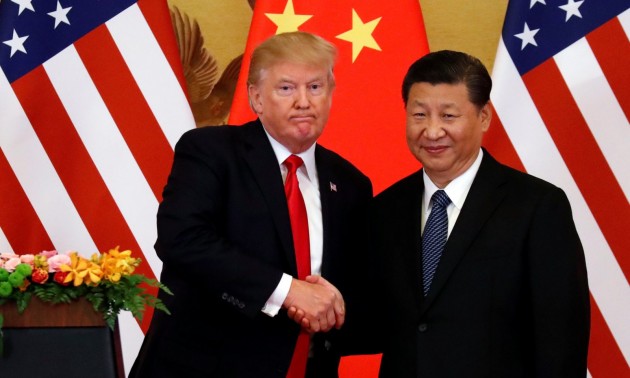- All signs point to the successful negotiation of a trade agreement which will benefit Chinese stocks and global capital goods producers
Asia Times
DAVID P. GOLDMAN

We can thank the Federal Reserve for the retracement of equity indices and commodity prices during the past three weeks. Friday’s market, though, followed news reports that China has offered a multi-year buying program to eliminate the bilateral trade deficit with the US within four years.
After the Fed’s turnabout, investors piled into the same stocks they had dumped in November and December, including names we love to hate, for example, Netflix (at 114 times trailing earnings). Chinese stocks lagged, evidently due to lingering concerns about trade war.
On Friday, though, the Chinese H-share ETF’s led the rally. That’s a good sign. I expect it to continue, and I also expect the rally will rotate towards beaten-up industrials like Mitsubishi Heavy Industries, Siemens, Schneider and manufacturers of semiconductor equipment.
Presidents Trump and Xi Jinping appeared close to a deal at their December summit in Buenos Aires, but the arrest of Huawei’s chief financial officer and subsequent shots at China’s flagship high-tech company put the deal in doubt. The danger was that American efforts to sideline Huawei would undermine the trade deal. No such thing will happen, according to Chinese sources familiar with the government’s thinking.
Huawei has already won the battle for dominance in 5G technology, and the United States is trying to shut the barn door after the horse has bolted. The trade issues will be negotiated on a track entirely separate from the issues that the US has thrown up regarding Huawei.
We can see the retracement of equity indices, the oil prices and US financial conditions in the two charts below showing price performance since Nov. 1, 2018. The circled area of the scatter chart shows where we are now, which is exactly where we were in early December. The fact that oil and stocks have moved in lockstep with financial stress makes clear that the suddenly dovish Fed is the source of the retracement.
There are several reasons to believe that trade negotiations will get back on track.
First, President Trump has wanted a resolution of the trade deal since the stock market warned him that he was gambling the whole US economic recovery.
Second, China is prepared to offer a deal that will allow Trump to claim victory, in the form of a buying spree that will eliminate (or at least reduce substantially) the bilateral trade deficit. That will help Trump in his 2020 re-election campaign.
Third, China has no fears for Huawei. The world’s largest telecom equipment maker let it be known late last year that it will unveil the world’s first 5G handset at the Barcelona Mobile World Congress on February 25, and I have learned that Huawei is already gearing up for mass production of the new mobile phone.
The US has asked its allies to work with Huawei’s competition, Ericsson and Nokia, as an alternative to the Chinese provider, but the Chinese do not believe that the Scandinavian companies offer serious competition. They are still working bugs out of their systems, while Huawei is ready to roll out the new mobile networks in scale. Whoever wants to shift to 5G, Chinese experts believe, will have to do business with Huawei.
Fourth, China did Trump a significant favor by calling Kim Jong Un to Beijing and persuading him to make progress on negotiations on the Korean peninsula. The scheduled meeting of South Korea’s president with Kim in February is evidence of such progress. This should build goodwill for trade negotiations.
Fifth, Xi Jinping will want to report progress on trade to the Party Congress in Beijing beginning March 1. The trade war has slowed Chinese growth, and it is in China’s interest (as well as Xi’s personal interest) to reach a resolution.
That reinforces our near-term optimism about equities that will benefit from a reduction of uncertainty about the global supply chain: Chinese equities, especially telecom infrastructure (eg, China Tower) and global cap goods producers.




